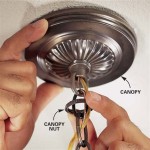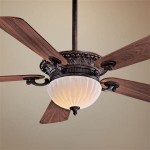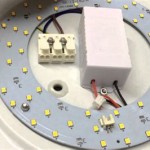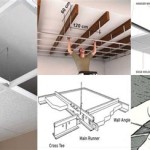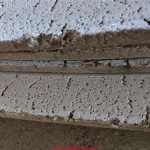Can You Put Crown Molding on a Slanted Ceiling?
Crown molding, a decorative trim typically installed at the intersection of walls and ceilings, adds a touch of elegance and sophistication to any room. However, the question arises: can crown molding be effectively installed on a slanted ceiling, also known as an angled or cathedral ceiling? The definitive answer is yes, but the process requires careful planning, specific techniques, and an understanding of the challenges involved.
The installation of crown molding on a slanted ceiling presents unique complexities compared to a standard 90-degree installation. The angles involved are not square, and the molding must be precisely cut to conform to both the wall angle and the ceiling angle. This often necessitates the use of advanced measuring and cutting techniques, along with specialized tools.
Consequently, installation on a slanted ceiling may require more time, skill, and expertise. Attempting this project without adequate preparation and knowledge can lead to unsatisfactory results, wasted materials, and potential injury. It is crucial to approach the project with a clear understanding of the challenges and a well-defined plan.
Measuring the Angles Accurately
Accurate measurement is the cornerstone of a successful crown molding installation on a slanted ceiling. Unlike standard installations where angles are typically 90 degrees, slanted ceilings introduce a variety of angles that need to be precisely determined. Several methods can be employed to achieve accurate measurements.
A protractor, particularly a digital protractor, is an indispensable tool for measuring the angles formed by the wall and the slanted ceiling. Place the protractor against the wall and ceiling to obtain a precise reading of the angle. Ensure the protractor is held flush against both surfaces for an accurate measurement. It is recommended to take multiple measurements at different points along the wall and ceiling to account for any variations or inconsistencies.
A bevel gauge, often used in conjunction with a protractor, can also be beneficial. This tool allows you to transfer the angle from the wall-ceiling intersection to your miter saw. By setting the bevel gauge to the angle you measured, you can accurately replicate the angle when cutting the crown molding. This is especially useful for complex angles that are difficult to measure directly with a protractor.
Another useful tool is a contour gauge. This tool allows you to trace the shape of the wall/ceiling intersection. This shape can then be transferred to paper and the angles can be measured on the paper or used as a guide for cutting the crown molding.
It is important to remember that walls and ceilings are rarely perfectly straight or perfectly angled. Therefore, meticulous measurement and adjustment are essential to ensure a seamless fit. Ignoring these imperfections can lead to gaps and an unprofessional appearance.
Choosing the Right Crown Molding Profile
The profile of the crown molding, which refers to its shape and design, plays a significant role in the overall aesthetics and the ease of installation on a slanted ceiling. Some profiles are inherently easier to work with than others. Simpler profiles with less intricate detailing tend to be more forgiving and adaptable to angled surfaces. More ornate or complex profiles can present challenges due to the increased number of cuts and potential for misalignments.
When selecting a crown molding profile for a slanted ceiling, consider the overall style of the room and the existing architectural details. A profile that complements the existing design will create a cohesive and harmonious look. Avoid choosing a profile that is too large or overpowering for the space, as this can create a visually unbalanced effect. Conversely, a profile that is too small may appear insignificant and fail to make a meaningful impact.
For beginners, a simpler profile, such as a cove or a moderately sized ogee, is generally recommended. These profiles are relatively easy to cut and install, and they can still provide a significant aesthetic upgrade to the room. As experience and expertise grow, more complex profiles can be considered. The material of the crown molding, such as wood, MDF, or polyurethane, will also affect the ease of installation. Polyurethane molding is lightweight and easier to cut and install, while wood molding offers a more traditional look and feel.
In addition to the profile, consider the material of the crown molding. Wood is a classic choice, offering warmth and a natural aesthetic. However, wood is susceptible to moisture damage and can be more difficult to work with than other materials. Medium-density fiberboard (MDF) is a cost-effective alternative to wood, providing a smooth surface for painting and being less prone to warping or cracking. Polyurethane is a lightweight and durable material that is resistant to moisture and insects, making it a suitable choice for bathrooms and kitchens.
Cutting Techniques for Angled Installations
Cutting crown molding for slanted ceilings requires precise and accurate techniques to ensure a seamless fit. The compound miter saw is the primary tool used for making these cuts. Understanding how to set the correct bevel and miter angles is crucial for achieving professional-looking results. The "nested" or "flat" cutting method are the two most common techniques.
The "nested" cutting method involves placing the crown molding against the fence and base of the miter saw, mimicking how it would be installed on the wall. This method requires a specific orientation of the molding and precise angle adjustments. Most miter saws have scales that allow you to set the bevel and miter angles accurately. However, it is important to double-check the accuracy of these scales using a protractor or angle finder.
The "flat" cutting method involves laying the crown molding flat on the miter saw table. This method requires calculating the compound miter and bevel angles using trigonometric formulas or charts. While the calculations can seem daunting, this method can be more accurate for complex angles. There are many online calculators and resources available to help you determine the correct cutting angles for flat cutting.
Whichever method you choose, it is essential to practice on scrap pieces of crown molding before cutting the actual pieces. This allows you to refine your technique and ensure that the cuts are accurate. It is also recommended to make slightly longer cuts than necessary, as it is easier to trim off excess material than to add to a short piece.
Furthermore, consider making cope cuts where the crown molding meets at inside corners. A cope cut involves removing the back portion of the molding, allowing it to conform precisely to the adjacent piece. Cope cuts create a tight, seamless joint that is less likely to show gaps or cracks over time. This method requires some skill and patience, but the results are worth the effort.
When cutting crown molding, always wear appropriate safety gear, including safety glasses and hearing protection. Ensure that the miter saw is properly maintained and that the blade is sharp and in good condition. A dull blade can cause splintering and inaccurate cuts.
After cutting each piece, test the fit before applying adhesive or fasteners. If the fit is not perfect, make small adjustments to the cut until the molding sits flush against the wall and ceiling. Patience and attention to detail are key to achieving a professional-looking installation.
In conclusion, installing crown molding on a slanted ceiling is achievable with careful planning, precise measurement, the right tools, and a thorough understanding of cutting techniques. While it presents challenges not encountered in standard installations, the aesthetic rewards can be significant. It is always advisable to seek professional assistance if you lack the confidence or experience to tackle this project on your own.

Crown Moulding On Angled Ceiling Sawdust Girl

Crown Molding On Angled Ceilings Makely

Crown Moulding On Angled Ceiling Sawdust Girl

Installing Crown Moulding On A Sloped Ceiling Doityourself Com Community Forums

Installing Crown Moulding Part Two Canadian Woodworking

Crown On An Angled Ceiling
Does Crown Molding Look Good In A Home With Vaulted Ceilings That Are Pitched At An Angle Between 8 And 14 Walls Quora

Crown Molding In Bedroom Vaulted Ceiling Slanted

Crown Moulding On Angled Ceiling Sawdust Girl

Installing Crown Moulding On A Sloped Ceiling Doityourself Com Community Forums
Related Posts


